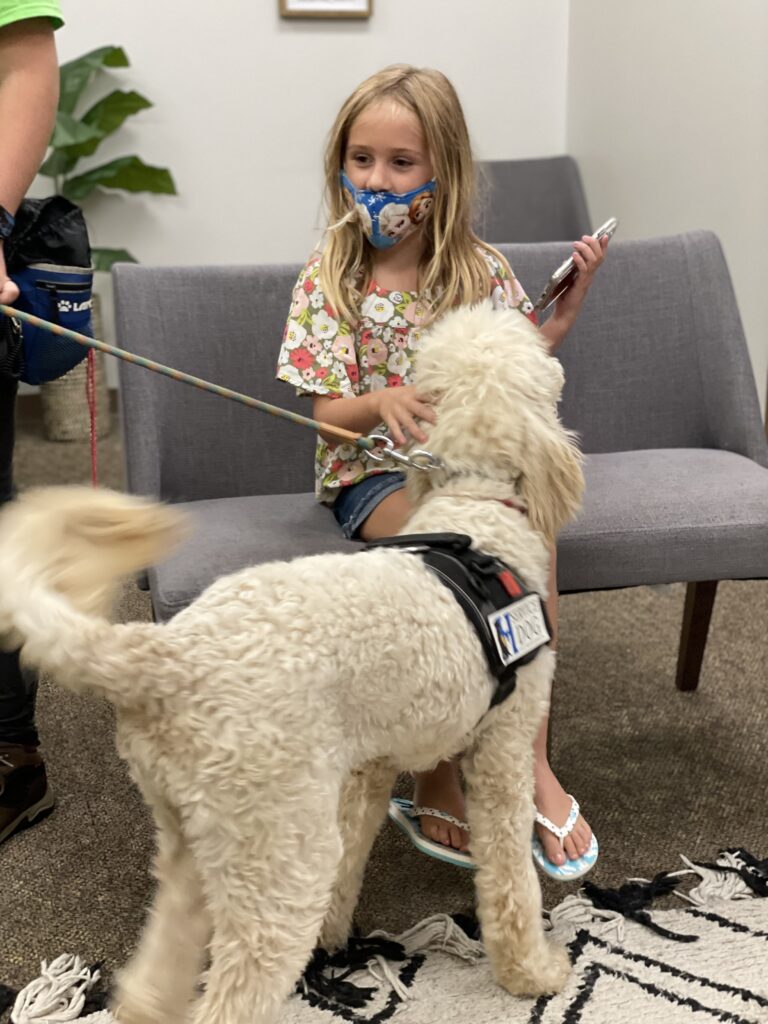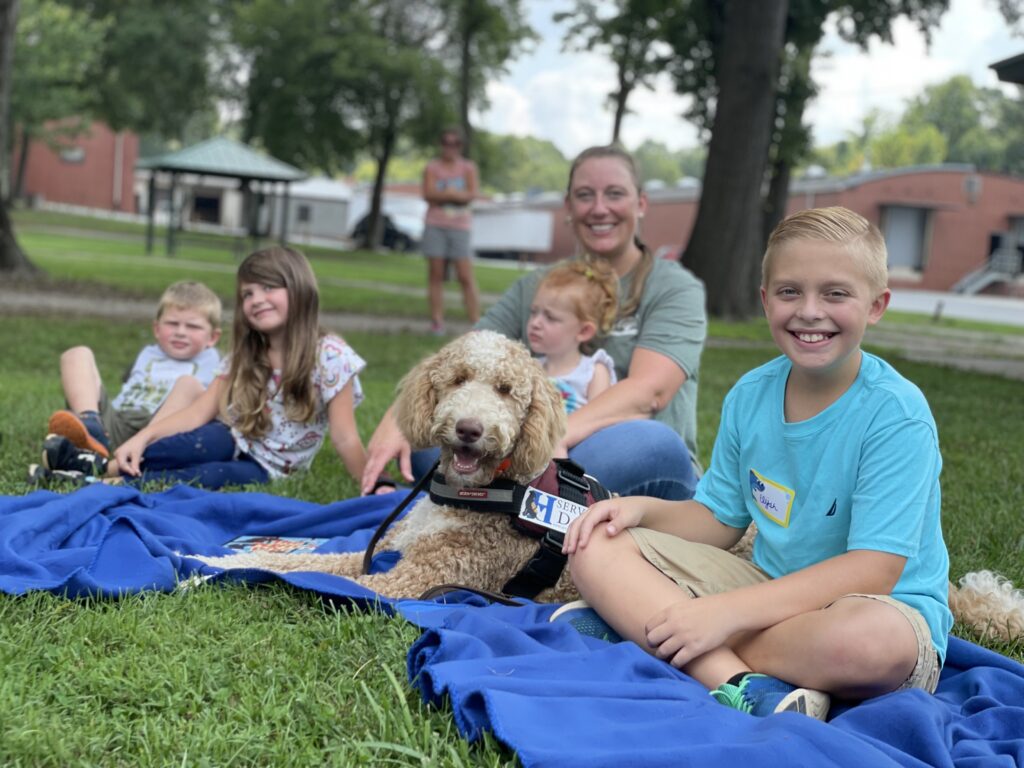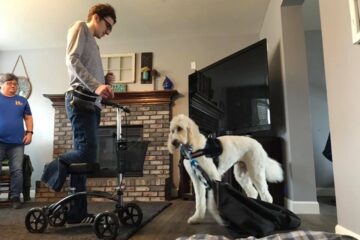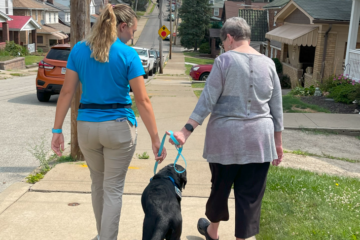If you look at the pages of history, you will see a faithful companion that has never left man’s side: dogs. Our best friends. Their long service to us and our ancestors is not limited to companionship – they have performed a long list of jobs over the past millennia.
Many people with disabilities need assistance in their everyday life. One way to ensure they always have a helping hand (or paw) is to use a service animal. Since March 15, 2011, titles II and III of the ADA (The Americans with Disabilities Act) only recognize dogs (and miniature horses) as service animals.
According to the ADA, a service animal is a dog that is individually trained to do work or perform tasks for a person with a disability. But what qualities make a dog a service animal? And how should these dogs be handled? Read this article to learn more.
A Service Dog Must Be Able to Perform Tasks
As noted above, a service dog must be able to perform tasks for a disabled individual related to the person’s disability. In other words, service animals are meant for such tasks; they are not pets. If a dog’s sole function is to provide emotional support or comfort to its owner, it doesn’t qualify as a service animal because it is not trained to do so.
Many people with disabilities can benefit from the help of dogs. For example, a trained dog can alert a patient whose blood sugar level should be checked if it reaches dangerously high or low levels. Dogs can also guide blind people, warn deaf individuals, and even pull a wheelchair.
Some mental disorders may also require the help of service animals. People with mental health problems who tend to forget to take their medication can be reminded by their service animal. Individuals with PTSD can also be calmed by their trained service animal in the event of an anxiety attack. When trained, dogs can sense anxiety attacks before they occur and also sense an impending attack. In this case, they can alert their owner and protect them during the seizure.

What about Emotional Support Animals (ESA)?
Dogs used solely for emotional support are different from service dogs because they are not trained for such tasks. By definition, service animals must be prepared for the task they’re to perform. For example, if a dog can sense an anxiety attack before it happens and then helps lessen the panic of its owner, then the animal qualifies as a service animal. Such cases are dependent on the circumstances.
Handler Must Have The Dog Under Control
The handler is either the disabled person the dog is helping or a third-party owner. They must be able to control their service animal by leashing, tethering, or harnessing.
The exclusion is if such restraints on the animal interfere with the actions it needs to perform. If so, the handler must find other ways such as voice, signals, and more to keep the service animal under control.
Generally speaking, the dog must accompany the handler in any public space where others are allowed to go – unless the dog is out of control and the handler isn’t successful in controlling the animal.
Service Animals In Public Spaces
If the dog has a history of uncontrollable behaviors or is not housebroken, it can be excluded from certain spaces. It’s important to note that service animals must be allowed to enter state and local government facilities, businesses, and nonprofit organizations that serve the public. This is unless excluded due to specific circumstances.
For example, service animals can enter a hospital and go to most public areas with their owner. But if the environment needs to be sterile, like in an operating room, then the animal may be excluded for fear of contamination.
The staff in a public space such as a cafeteria or hospital aren’t responsible for the service animal and aren’t required to take care of it. Public areas such as hotels that usually charge people for damage are allowed to charge individuals for the damage their service animals have caused.

Clean & Well-Groomed Service Animals
Although the ADA doesn’t require service animals to wear a vest or ID tag, the animals should be well-groomed, especially when entering public spaces. The handler is responsible for feeding, grooming, the dog’s use of the bathroom, and veterinary care.
The ADA does not specify any breed of dog in its definition of a service animal. This means the service animal must not be excluded from a public place because of its breed’s stereotypes. Even if a municipality bans certain dog breeds, such bans are inapplicable for service animals.
Like any other dog, the service animal should undergo any mandatory vaccinations it needs to. Service animals aren’t exempt from public health requirements and local animal control. They’re also subject to dog licensing and being registered. But according to the ADA, they don’t need to be registered explicitly as service animals.
Fear of dogs or allergies isn’t a valid reason for denying access to a disabled individual. In the case of allergies, appropriate measures must be taken. Hence, the person with allergies and the dog should be at the farthest they can be, either by being at two ends of a room or in two different rooms in one facility.
Other Important Considerations
Generally speaking, the goal of service animals is for individuals with disabilities to be aided in tasks they would otherwise not be able to do. This means their service animal should be with them at all times. Otherwise, that defeats the entire purpose of the service animal.
Hence, businesses cannot discriminate against guests who have service animals. For example, people who have service animals should be generally allowed to walk into cafeterias or salad bars with their service animals.
Another example would be hotels that offer “pet-friendly” rooms. Individuals with service animals should be allowed to reserve any room irrespective of their service animal. They shouldn’t have to choose between rooms the hotel has assigned to them. Hotels cannot charge extra fees for cleaning the room if a service animal lives with the owner.
Examples where these considerations don’t need to be made are places the ADA doesn’t have jurisdiction – such as flying with your service dog. Commercial flights, for example, act under the Air Carrier Access Act, a federal law protecting the rights of the disabled. Furthermore, religious institutions and organizations such as churches and mosques are exempt from the ADA.

The Rules Regarding Training A Service Dog
There are several options for getting a service dog. The ADA doesn’t require service animals to be professionally trained before their handler uses them. The dog can be trained by anybody else, or even an individual who is disabled (if their disability allows it). What is important is that the dog is trained to help a disabled individual. How this training occurs and by whom doesn’t concern the ADA.
Professional trainers, however, may be a better choice for training a service dog because they already have experience training other dogs and know exactly what the disabled person needs. Professional service dog training can be a great way to avoid getting a pet instead of a faithful service dog.
In conclusion
Remember that the ADA’s definition of “service animal” doesn’t affect other broader definitions such as “assistance animal”. Such definitions are included in other laws. For example, the definition of “assistance animal” is covered under the Fair Housing Act.
Any dog can become a service animal with proper training. Individuals who own service dogs should remember to always handle them properly, have them under control, and keep them well-groomed and clean when entering public spaces.



0 Comments